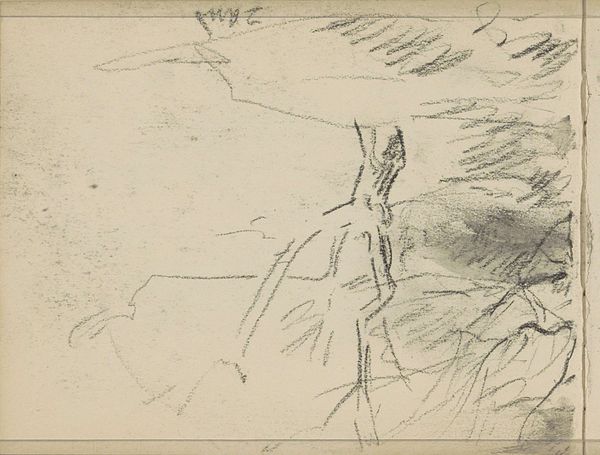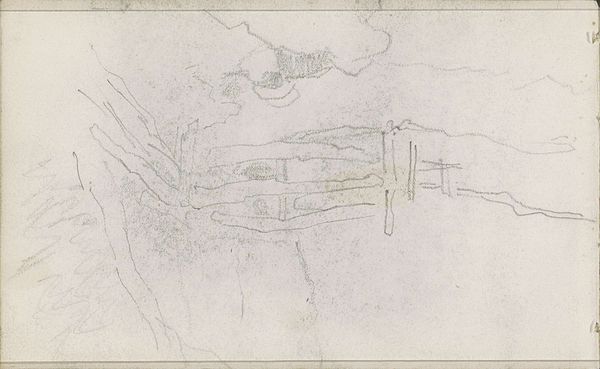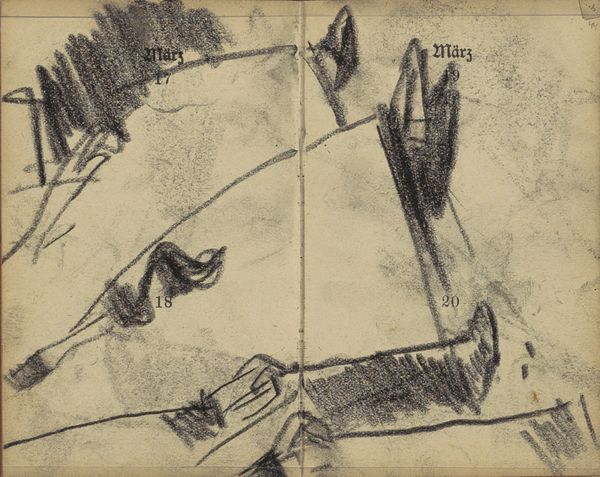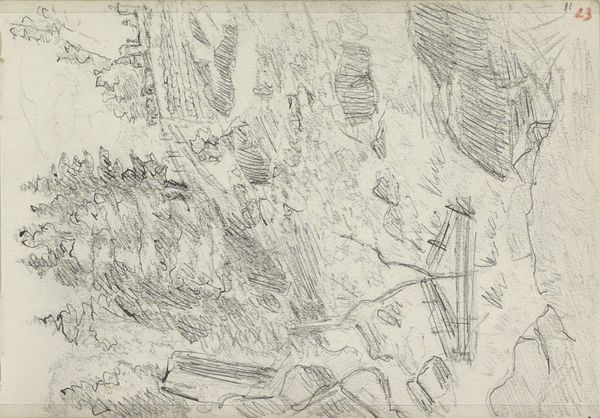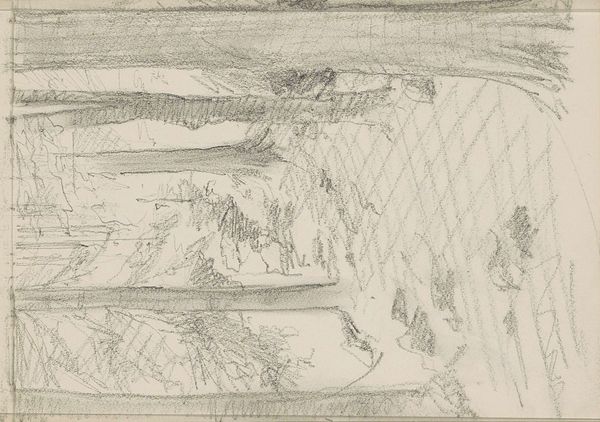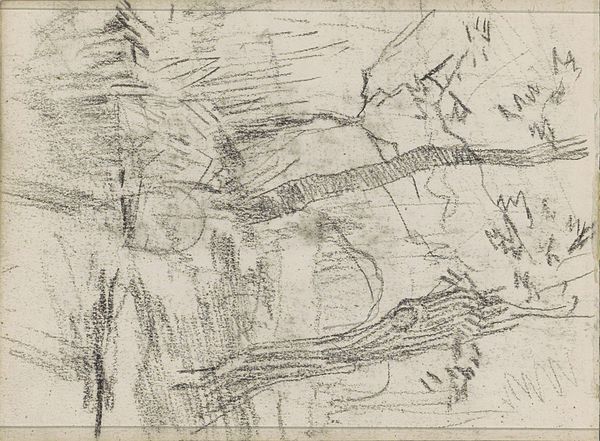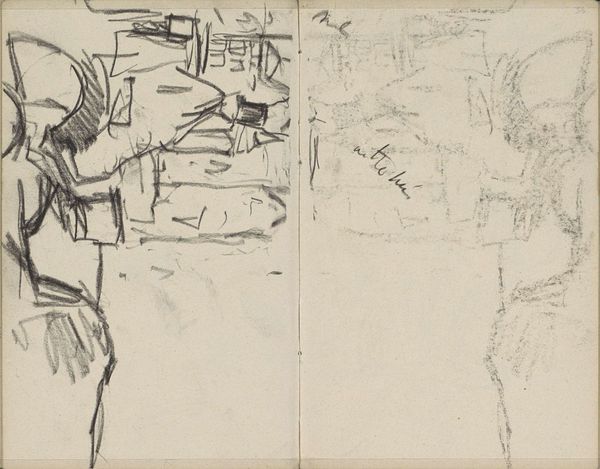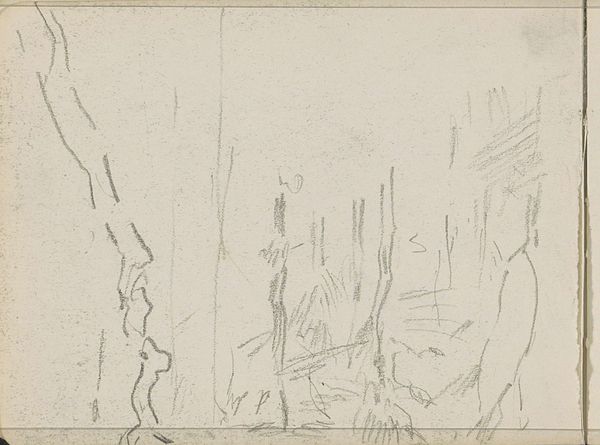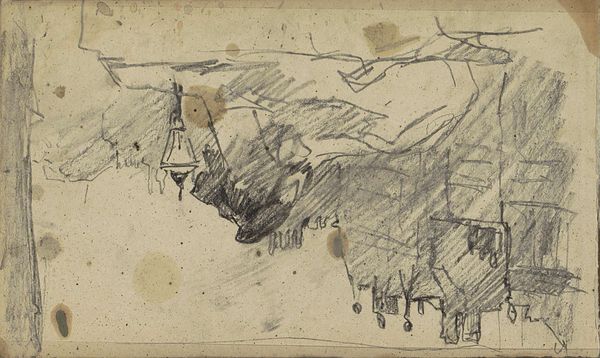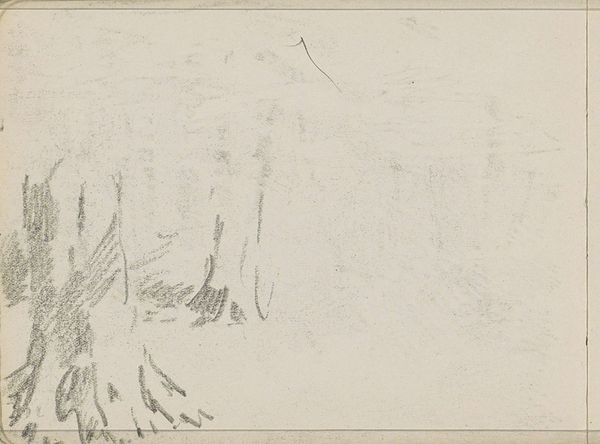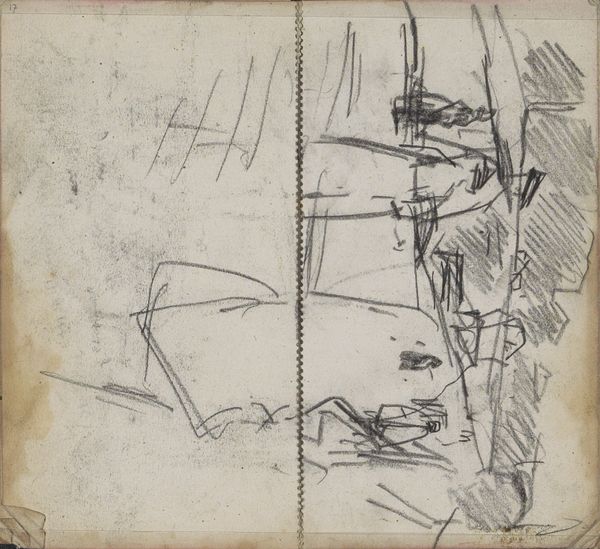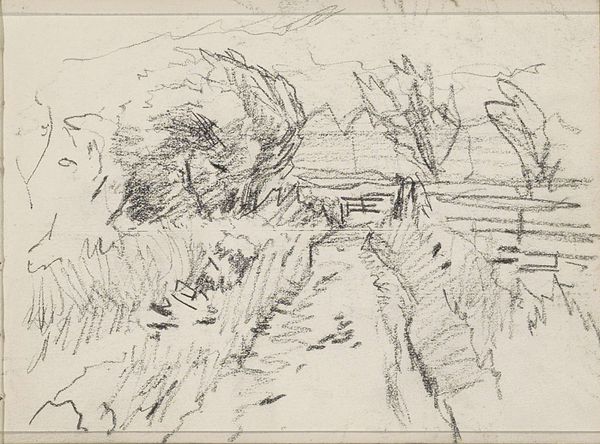
Copyright: Rijks Museum: Open Domain
Editor: This is Johan Antonie de Jonge's "Landschap," made sometime between 1881 and 1927. It's a pencil sketch on paper, and it feels very immediate and raw. What catches your eye when you look at this sketch? Curator: What strikes me is how this simple landscape encapsulates the evolving role of art in society during that period. This looks like it could be "plein air" or something sketched on location, perhaps in a personal sketchbook. With increased access to art education and materials in the late 19th and early 20th centuries, the act of sketching outdoors became more accessible and tied to personal expression. Editor: So it’s not just a landscape, but also a moment captured in time influenced by changing societal structures. How would its original audience perceive the artwork and how does it align to previous forms of landscape artwork? Curator: Exactly. Before this shift, landscape art often served to depict grand estates or idealized scenes, reflecting the wealth and power of the patrons. But something like this sketch indicates a democratizing influence. We can observe landscape art shifting towards personal experience and observation of everyday environments, influenced by movements like Impressionism, as it gained traction in artist circles and exhibitions. De Jonge seems focused on rendering momentary visual experience through an almost journalistic rendering rather than crafting some narrative. How does knowing this shift affect your initial read of the sketch? Editor: It gives it more weight. It's no longer just a pretty scene, but evidence of a broader social change and the development of seeing, drawing, and showing that vision! I appreciate that De Jonge is less interested in high realism in his art than in portraying this brief period on the spot. Curator: And remember that the art world itself was changing! The rise of independent galleries and salons offered artists more opportunities to exhibit unconventional work. Understanding these socio-political contexts adds a lot of flavor to a work that could just read "landscape drawing". Editor: I never thought about how a simple sketch could hold so much history. Thanks for highlighting these factors.
Comments
No comments
Be the first to comment and join the conversation on the ultimate creative platform.
